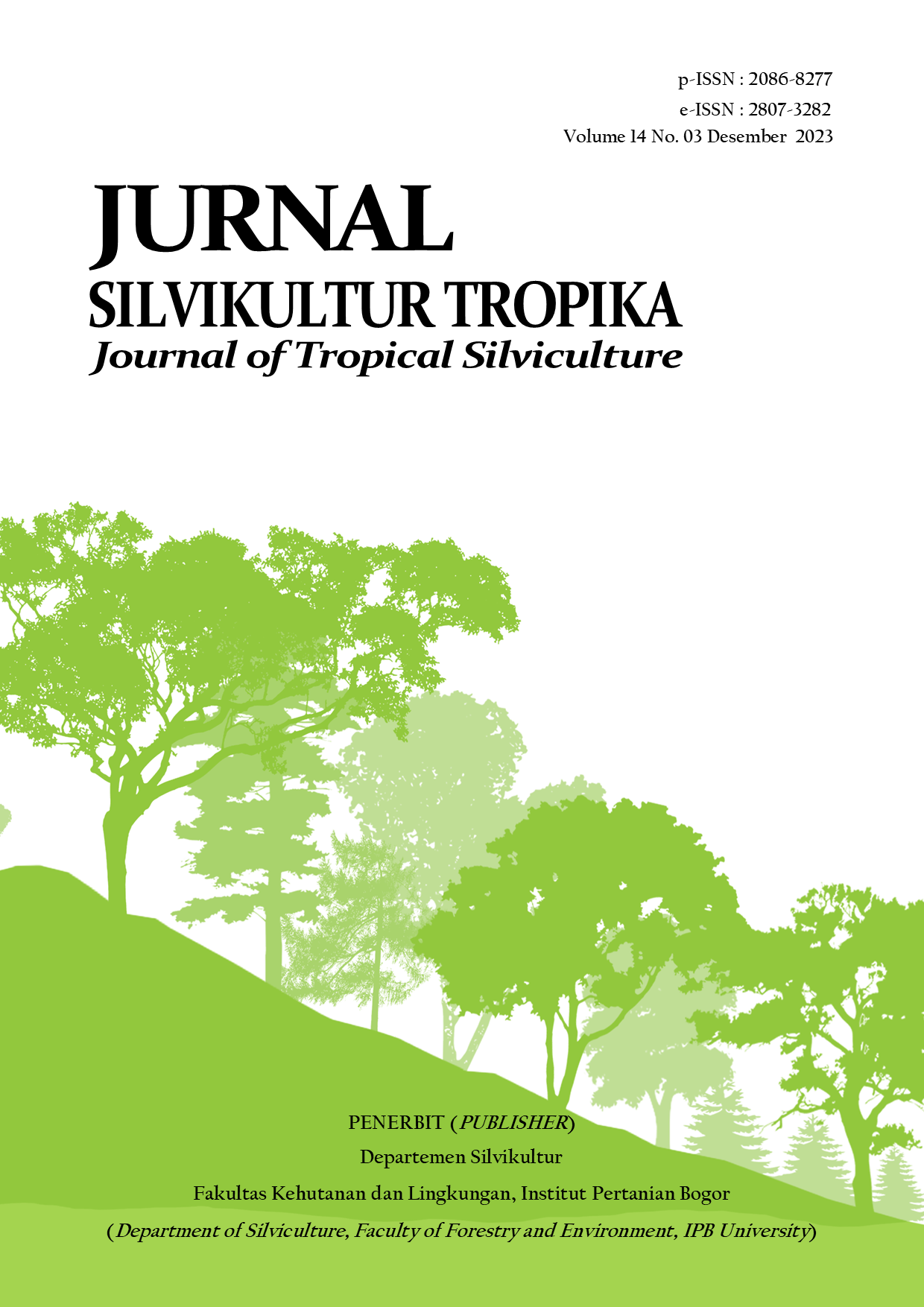-
Erianto Indra Putra
Department of Silviculture, Faculty of Forestry and Environment - IPB University
-
Robi D Waldi
Department of Silviculture, Faculty of Forestry and Environment - IPB University
-
Ahmad Rifaldo
Department of Silviculture, Faculty of Forestry and Environment - IPB University
-
Yovielachicha Khairunisa
Department of Silviculture, Faculty of Forestry and Environment - IPB University
-
Deya Akmalia
Department of Silviculture, Faculty of Forestry and Environment - IPB University
-
Siti Labora Siburian
Department of Silviculture, Faculty of Forestry and Environment - IPB University
-
Rian Dwirizqi Miftahul Huda
Department of Silviculture, Faculty of Forestry and Environment - IPB University
-
Pratiwi D Susanti
Department of Silviculture, Faculty of Forestry and Environment - IPB University
-
Citra S Putri
Department of Silviculture, Faculty of Forestry and Environment - IPB University
-
Juang R. Matangaran
Department of Forest Management, Faculty of Forestry and Environment, IPB University,
-
Ati Dwi Nurhayati
Department of Silviculture, Faculty of Forestry and Environment - IPB University
-
Lufthi Rusniarsyah
Department of Silviculture, Faculty of Forestry and Environment - IPB University
Abstract
Green Open Space (RTH) is part of the open spaces of an urban area filled with plants and vegetation to support ecological, socio-cultural, and architectural benefits. An approach that can be done to determine green open space is by analyzing the density of vegetation. The minimum distribution of vegetation in an urban area should be 30% of the total area. This vegetation distribution can be calculated using Landsat 8 imagery. This research was conducted to determine Green Open Space in Bogor Regency by using Landsat 8 imagery. This study clearly showed that some areas in Bogor Regency are still having lack of vegetation, bring a need to develop green open spaces in the areas.
Keywords: Landsat 8 imagery, Bogor Regency, Green Open Space, Vegetation










